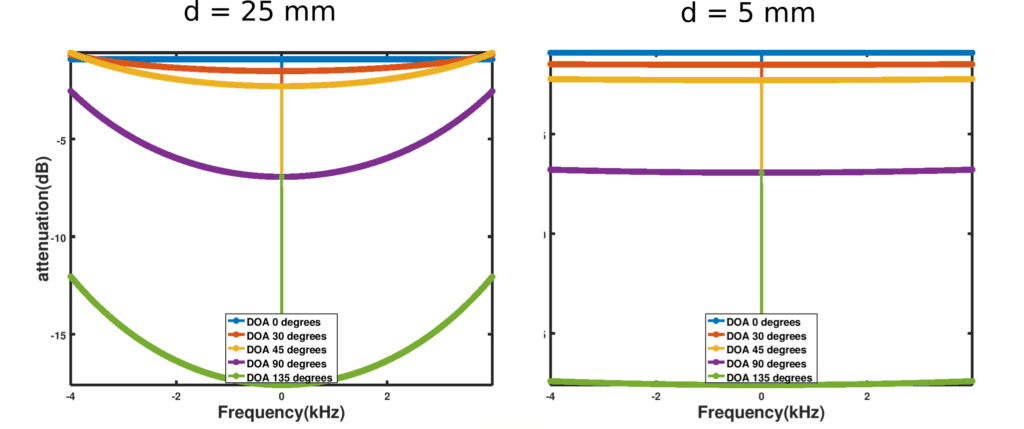Endfire beamforming is used extensively in situations where there is a single known beam direction. Whiles most improvements in endfire beamforming is achieved by increasing the number of microphones in the linear array, some extra gains can be obtained by the choice of the separating distance between consecutive microphones.
Consider a two microphone array, for example, as shown in Figure 1:
Figure 1: Two microphone array
The endfire beamforming is an optimization problem to meet 2 constraints:
and
where is the desired beam direction,
is a desired null direction and
is a design parameter. The final solution is given as
It can be shown that the optimal value of satisfies
The distance can be used to attain maximum suppression for beams that are close to the desired speech angle. Figure 2 below illustrates two magnitude response plots using
and
.
Figure 2: Extra gains by using smaller separation distance
It is clear that there are some gains for speech signals that are close in there direction of arrival to the desired signal. It should also be noted that $d$ cannot be made arbitrarily small because of electro-mechanical considerations. Also, too small a value of d may lead to the suppression of the actual desired signal if it deviates minimally from the apriori stated direction of arrival.
VOCAL Technologies offers custom designed solutions for beamforming with a robust voice activity detector, acoustic echo cancellation and noise suppression. Our custom implementations of such systems are meant to deliver optimum performance for your specific beamforming task. Contact us today to discuss your solution!

